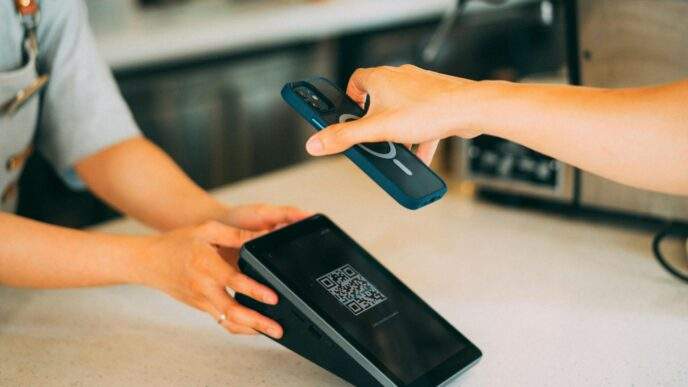The Lightning Network is redefining bitcoin’s potential, making it a faster, cheaper, and scalable payment system for everyday use.
As a second-layer protocol built on Bitcoin’s blockchain, it allows instant transactions and micro-payments, overcoming the digital currency’s inherent limitations.
Built to Fulfill Bitcoin’s Vision
The Lightning Network is a layer-2 solution designed to scale Bitcoin by processing transactions off its main blockchain. First developed in 2015 by Thaddeus Dryja and Joseph Poon and then launched by Lightning Labs in 2018.
The network addresses Bitcoin’s scalability issues—handling just 7 transactions per second (TPS) compared to Visa’s 24,000 TPS. By allowing off-chain transactions, the network delivers near-instant payments with minimal fees, making bitcoin practical for daily purchases, from coffee to online tips.
As of July 30, 2025, the Lightning Network boasts a capacity of approximately 3,650 BTC, approximately $431,200,575, supported by 11,851 nodes and 42,169 channels worldwide. This decentralized infrastructure improves Bitcoin’s role as a peer-to-peer electronic cash system, fulfilling the vision as proposed by Satoshi Nakamoto in 2009.
How It Works
The Lightning Network operates through payment channels, allowing secure, off-chain transactions while leveraging Bitcoin’s strong security. Here’s how it functions:
- Opening a Channel: Two users deposit bitcoin (e.g., 0.5 BTC each) into a shared multisignature address on the blockchain, creating a channel. This initial transaction is recorded on-chain.
- Off-Chain Transactions: Within the channel, users can execute unlimited transactions instantly with near-zero fees, updating the balance without the involvement of blockchain. For example, Alice can send Bob 0.1 BTC, and the channel’s state adjusts accordingly.
- Routing Payments: If users don’t have a direct channel, payments are made through intermediaries using Hash Time-Lock Contracts (HTLCs). For example, Alice can pay Charlie via Bob if Bob has channels with both.
- Closing the Channel: When they’re done, users close the channel, settling the final balance on the blockchain, recording only the net result.
Smart contracts, through mechanisms like CheckSequenceVerify and CheckLockTimeVerify, ensure security, while third-party watchtowers monitor channels to prevent fraudulent closures, such as presenting old balances.
Fulfilling Bitcoin’s Potential
The Lightning Network allows bitcoin for everyday real-world purposes and use. Its most important advantages are:
- Lightning-Fast Speed: Transactions settle in milliseconds to seconds, compared to bitcoin’s 10-minute block time, allowing real-time payments for retail, gaming, or tipping.
- Ultra-Low Fees: Payment fees are typically less than a cent, for example, $0.84 vs $2.43 for on-chain payments, making microtransactions easy.
- Massive Scalability: The lightning network can settle millions of TPS, higher than bitcoin’s 7 TPS, which is on the same level as traditional payment systems.
- Improved Privacy: Onion routing conceals payment origins and destinations from non-adjacent nodes, promoting user privacy.
- Innovative Applications: From in-game purchases to pay-per-second WiFi and social media tipping, the network supports diverse use cases. In 2023, Nostr recorded 2.1 million Lightning tips totaling 13.46 BTC.
Growing Adoption
Adoption is surging. CoinGate reports Lightning payments rose from 6.5% of Bitcoin transactions in Q2 2022 to 16.6% in Q2 2024, with projections exceeding 20% in Q3 2024.
In July 2025, Square announced integration with 4 million merchants, expanding the network’s reach for merchant payments and social media tipping. The Lightning Network is gaining attention as a cornerstone of bitcoin’s payment ecosystem.
What Are The Challenges of the Lightning Network?
Despite its promise, the Lightning Network faces obstacles:
- On-Chain Dependency: Opening and closing channels requires on-chain transactions, which can be expensive during network congestion.
- User Complexity: Managing channels and liquidity can be tricky for newcomers, though wallets like Wallet of Satoshi are simplifying access.
- Security Risks: Fraudulent channel closures are possible, although mitigated by watchtowers. Wallet or API vulnerabilities remain a concern.
- Centralization Concerns: A potential “hub-and-spoke” model, where large nodes dominate, could challenge bitcoin’s decentralization.
- Evolving Technology: The network is still developing and improving in 2025. While there was a decrease in capacity from September 2024 to January 2025, it rebounded and surpassed previous levels by early 2025. Specifically, capacity surpassed 5,000 BTC in early 2025 and reached 3,653.47 BTC by July 2025, proof of stagnation, though transaction volumes continue to grow.
Getting Started
New users can join the network by using Lightning-compatible wallets. Custodial options like Wallet of Satoshi offer ease of use with password recovery, ideal for beginners. Non-custodial wallets like Zap provide greater control but require managing private keys. To begin:
- Download a Lightning-compatible wallet.
- Fund it with bitcoin to open a channel.
- Transact instantly across the network.
- Secure private keys to protect funds.
Using reputable wallets ensures safety, but staying informed about security updates is crucial.
The Future of Bitcoin Payments
The Lightning Network agrees with bitcoin’s original vision, as seen on bitcoin Pizza Day in 2010, when 10,000 BTC bought two pizzas.
By processing fast, affordable, and scalable transactions, it makes bitcoin a viable global payment system. Ongoing upgrades, such as Lightning Loop, improving usability.
The Lightning Network is a dynamic, continuous solution with transformative potential. Despite challenges like complexity and capacity fluctuations, its growing adoption—as seen with merchant integrations and rising transaction volumes—is a sign of a bright future.
For beginners, it offers an accessible entry into bitcoin’s next chapter, from online tipping to buying everyday items.















